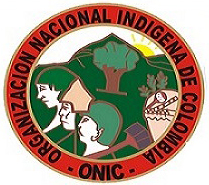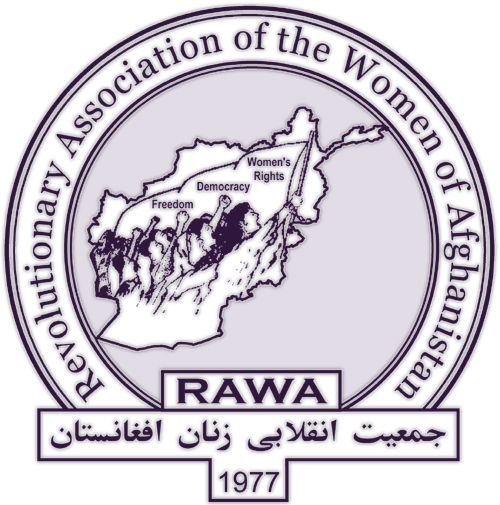Peru
Peru: campesino alliance with 'illegal' miners
On Nov. 11, the Second National Congress of Artisanal Miners was held at Juliaca, in Peru's southern region of Puno, presided over by Hernán de la Cruz Enciso, AKA Tankar Rau Rau Amaru, outspoken president of the National Confederation of Artisanal Miners and Small Producers (CONAMI), pledging to launch new road occupations if the government does not rescind decrees mandating the "legalization" of informal mining operations. A surprise guest was Walter Aduviri, leader of the Aymara campesino struggle in Puno, who has led strikes and protests against mining projects. De la Cruz and Aduviri shared a public abrazo (embrace) and hailed the meeting as "a step towards the consolidation of objectives" of their respective movements. De la Cruz said Aduviri "is against big mining and supports small mining." Peru's pro-business website eeé (for Economy & Energy with Ethics [sic]) on reporting the meeting, added: "Peruvians are now notified of this new alliance of terror and violence, between Tankar Rau Rau Amaru (Hernán de la Cruz) and Walter Aduviri."
Peru: Water Tribunal indicts Conga project
On Nov. 9, the Costa Rica-based Latin American Water Tribunal, an oversight body on environmental justice formed by jurists and specialists from across the hemisphere in 1998, issued a judgment calling on Peru to cancel the controversial Conga mining project in northern Cajamarca region, finding numerous irregularities in its approval. The ruling, issued in a public hearing in Buenos Aires, questioned the objectivity of Peru's Environment Ministry (MINAM) and Naitonal Water Authority (ANA) in the case; condemned the criminalization and repression of social movements in Cajamarca; and called upon Peru to uphold access to water as an internationally recognized human right. (Celendín Libre, GRUFIDES, Nov. 9)
Peru: threats against Cajamarca movement
In a sign of community divisions in Peru's northern region of Cajamarca, campesinos from the "influence zone" of the proposed Conga mineral project demonstrated in the regional capital Nov. 1, where they threatened to evict the "Guardians of the Lagunas"—campesinos who oppose the mine, and have established an encampment near the concession bloc to assure that the Yanacocha mining company does not begin work that would impact the zone's highland lakes. "We don't want violence, but they are ursurping our lands and we are reaching an agreement to expel them," said Felipe Palma López, leader of the ronda campesina (peasant self-defense patrol) in the community of Quengorio Alto. Demonstrators accused the Guardians of being "manipulated by politicians."
Peru: land, water conflicts grow in Cajamarca
Local campesinos reported Oct. 26 that thousands of young trout were found dead in the Río Llaucano, in Peru's northern region of Cajamarca, and blame contamination from the ginat Yanacocha gold mine that sits atop the watersahed. The campesinos held a press conference in the town of Bambamarca to announce thier grave fears for the safety of the region's waters. The Llaucano is a tributary of the Marañon, one of the main rivers that drains into the Amazon. The fish were found washed up near the communities of Santa Rosa in Bambamarca province and La Paccha in Chota province. (Servindi, Oct. 26)
Riots rock Lima —in footsteps of Hillary Clinton
Two were killed and over 100 injured—including 50 police officers—in riots that caused damage worth millions of dollars in the Peruvian capital Lima Oct. 25. The riots broke out when police blocked the entry of delivery trucks into the city's giant wholesale market, La Parada, which was ordered closed by the administration of Mayor Susana Villarán for not meeting safety and hygiene standards. Violence spread to the nearby industrial zone of Gamarra, where a police post was attacked with Molotov cocktails and ransacked, and shops and factories quickly closed their gates and halted operations. Some 5,000 police have flooded the district.
Peru: will land titling undercut Sendero?
Peru's President Ollanta Humala on Oct 25 announced the creation of a new multi-million dollar fund for development projects in the Upper Huallaga Valley and the Apurímac-Ene River Valley (VRAE)—the last two remaining areas of the country where the Shining Path insurgency remains active. The initiative is aimed at undermining the insurgency and providing economic alternatives to coca cultivation. (La Republica, Oct. 25) The government's Organism for the Formalization of Informal Property (COFOPRI) also announced that land titles would be granted to 784 campesino families in San Martín region's provinces of Huallaga and Lamas, both in the Huallaga Valley. Since August 2011, a total of 3,513 land parcels have been titled to peasant families in San Martín, in a bid to pacify the restive region. (Andina, Oct. 25)
Peru: indigenous development plan for Amazon
The Inter-ethnic Association for Development of the Peruvian Rainforest (AIDESEP) on Oct. 17 issued a "Plan for the Full Life of the Amazon," calling for indigenous-directed development projects, with the necessary funds to be provided by companies that exploit resources in the Amazonian regions. But the document, which was presented to the executive and legislative branches of the Peruvian government, draws a hard line against numerous existing and planned exploitation projects. It states that forests are threatened by 26 hydro-electric projects, particularly naming the Inambari project in Madre de Dios region and the Tambo 40 project in the Apurímac-Ene River Valley (VRAE); that hydrocarbon blocs cover 70% of the Peruvian Amazon, with mineral blocs of an additional 10 million hectares; and that an "inundation" of new roads into indigenous territory constitutes a "grave threat to the autonomous peoples," especially naming the controversial Purús-Iñapari highway in Madre de Dios. The statement called upon Peru's government to comply with International Labor Organization Convention 169 and halt projects that have not been approved in prior consultation with impacted indigenous peoples. (AIDESEP, Oct. 17)
Peru: OAS rights commission to hear Conga case
On Oct. 16 in Lima, a delegation from the Inter-American Commission on Human Rights (IACHR) met with Ydelso Hernández, president of the Unitary Struggle Command in Peru's northern region of Cajamarca, who is seeking an order from the IACHR halting the controversial Conga mining project. Hernández said a group representing rondas campesinos (peasant self-defense patrols) in Cajamarca will travel to Washington DC at month's end to testify before the IACHR about rights violations associated with the project.















Recent Updates
3 hours 7 min ago
18 hours 16 min ago
18 hours 41 min ago
1 day 2 hours ago
1 day 3 hours ago
1 day 19 hours ago
2 days 3 hours ago
3 days 20 hours ago
3 days 20 hours ago
4 days 1 hour ago